Feed aggregator
They Got Us Pug’d!
At the local Family Pet Expo recently, we stumbled across a company called Puglie. No prizes for guessing, they specialize in lots of cool knick-knacks specifically themed around everyone’s favorite little flat-faced dog breed. Over at their web page (on a site called For Fans By Fans) you’ll see examples of their t-shirts, wallets, mugs, and lots and lots of pillows.

image c. 2019 Puglie
REX Talk:Markeopteryx Tusk

Rex talks can be a bit pretentious at times but really this has been an amazing advancment in the study of humans. I just have to admit that my favorite humans films are a bit inaccurate. ....I've got to give props to Anya Redkina the animator at Sheridan College Animation [1] with this her 2019 grad film and I hope to see more at some point. You can find more of her art here: https://www.artstation.com/anyaredkina [2] [1] https://academics.sheridancollege.ca/programs/bachelor-of-animation [2] https://www.artstation.com/anyaredkina
View Video
Blacksad: Under the Skin

Coming soon to Xbox near you is an honest to god Blacksad [1]game. If you are not aware, Blacksad is a furry French noir detective series of graphic novel books that are very adult and very furry. This is also coming out for Playstation 4 and Steam later in the year. https://store.steampowered.com/app/1003890/Blacksad__Under_the_Skin/ [2] "A dark corruption scandal in the heart of the New York City's underworld for charismatic detective John Blacksad" [1] https://en.wikipedia.org/wiki/Blacksad [2] https://store.steampowered.com/app/1003890/Blacksad__Under_the_Skin/
View Video
IGN: SonicFox VS HoneyBee

Yes, he's furry, black and very gay and going to kick your ass. Are we mainstream now? "HoneyBee takes on SonicFox in Mortal Kombat 11 in this high level pro grudge match at the IGN Esports Showdown!"
View Video
Purple Puss Was Taken
Back from BABS-Con in Northern California, and of course we have lots to talk about. But first — we’re still working our way through WonderCon! There we met Kristian Horn, the creator, writer, and artist behind Periwinkle Puss — an on-line funny animal superhero comic. “The Periwinkle Puss is the principled purveyor of justice in his metropolis. With powerful pride he protects the poor and downtrodden from the parade of criminals that attempt to paint his city with their deeds of paltry nefariousness!” Kristian put out a full-color mini-comic at the convention to guide kitty and superhero fans to his web site. Worked here!
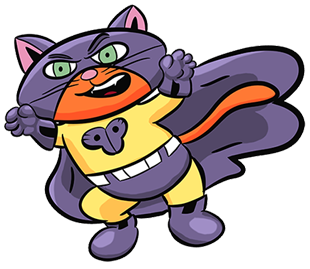
image c. 2019 by Kristian Horn
The Fox and The Pigeon

Here is a cute short student film from the very fine Sheridan College [1]. Update: Looks like they pulled the short and uploaded a trailer so until it shows back up I swapped the trailer. Original Link: https://vimeo.com/332109044 [2] [1] https://www.sheridancollege.ca/academics/faculties/animation-arts-and-design [2] https://vimeo.com/332109044
View Video
In a Dog's World, by Mary E. Lowd
 Is In a Dog's World set in a dog's world? Well, yes and no. Humans have vanished from Earth, and several species are now "uplifted," gaining human-level intelligence and an anthropomorphic form. The story focuses on dogs and cats, which are now the main inhabitants of North America, and there, if you'll pardon the expression, dogs rule the roost."Everywhere she looked in the world, it was dogs on top. Politicians, CEOs, the biggest celebrities, even the most innovative scientists -- they were all dogs."Our main character, Katasha, is a tabby point Siamese cat, preparing for her high school prom and awaiting the results of her college application. She is not happy with the status that most cats have and wants to be a success. As dogs are successful, that is her aim: not to be a dog but to be a part of their world. She wishes to emulate the traits that dogs possess, wants to go to a predominantly dog college, and desires to date a dog.From this foundation, Lowd builds a short, simple but remarkably interesting story that keeps the focus tight but constantly reminds us of the wider world through its effect on Katasha. The animal nature of the characters matters. Cats and dogs exhibit different sizes, strengths and behaviours. This is relevant when the characters have to consider how a dog can fit in a car made for cats or how a cat can hike while carrying as much as a dog.However, the characters also serve as mirrors to reflect our own world and its issues. The comparison of dogs and cats mimics the racial biases of white and black in America. References to majority dog colleges and programs to enroll more cats seem to make that clear. The situation grows more complex through phrasing such as "there was a glass ceiling sometimes, and cats never rose above it" which directly borrow from feminist vocabulary. Discussion of the doctrine of the First Race, a belief system mostly held by dogs, brings religion into the mix too.What I found fascinating was that the characters expressed many different views on their society and the topics above, but none was ever presented as better than the others. Different viewpoints fall into the background, colouring the way Katasha sees and interacts with the world, but it is left up to the reader to evaluate them. Indeed, it might even seem strange for me to spend so much time talking about them as Katasha is primarily concerned with herself, her future and obtaining a canine boyfriend.While the story may be a simple, generic romance, it is a pleasure to read. How can one not enjoy reading a book where one chapter begins, "In the wake of the fight, Papa contrived to work all day Saturday, the day of the prom. In fairness, there was an unforeseen pileup on the freeway." I don't know whether it is the sheer understatement of the second sentence or the strange feeling that the narration is scolding the accident for not occurring on schedule, but this opening never fails to make me smile. And while I joke, the writing is addictive and an effortless read. Once I began, I found myself taking the book (or tablet, in this case) to bed so that I could read a bit more then waking up early to continue from where had I left off.Having come from a sprawling 600 page novel where the characters' actions determined the fate of kingdoms, In a Dog's World was a wonderful change of pace. The stakes are low, and the problems are easily solved, many existing only within the love-struck mind of our main character. Despite the simple story, there is a lot of depth in the world, which I am sure is explored further in Lowd's other novels within this universe, and it is compulsively readable. I can highly recommend it as a way to relax and go back to a simpler time or, if you're still young, as an opportunity to adopt Katasha's virtues and discard her vices.-
Is In a Dog's World set in a dog's world? Well, yes and no. Humans have vanished from Earth, and several species are now "uplifted," gaining human-level intelligence and an anthropomorphic form. The story focuses on dogs and cats, which are now the main inhabitants of North America, and there, if you'll pardon the expression, dogs rule the roost."Everywhere she looked in the world, it was dogs on top. Politicians, CEOs, the biggest celebrities, even the most innovative scientists -- they were all dogs."Our main character, Katasha, is a tabby point Siamese cat, preparing for her high school prom and awaiting the results of her college application. She is not happy with the status that most cats have and wants to be a success. As dogs are successful, that is her aim: not to be a dog but to be a part of their world. She wishes to emulate the traits that dogs possess, wants to go to a predominantly dog college, and desires to date a dog.From this foundation, Lowd builds a short, simple but remarkably interesting story that keeps the focus tight but constantly reminds us of the wider world through its effect on Katasha. The animal nature of the characters matters. Cats and dogs exhibit different sizes, strengths and behaviours. This is relevant when the characters have to consider how a dog can fit in a car made for cats or how a cat can hike while carrying as much as a dog.However, the characters also serve as mirrors to reflect our own world and its issues. The comparison of dogs and cats mimics the racial biases of white and black in America. References to majority dog colleges and programs to enroll more cats seem to make that clear. The situation grows more complex through phrasing such as "there was a glass ceiling sometimes, and cats never rose above it" which directly borrow from feminist vocabulary. Discussion of the doctrine of the First Race, a belief system mostly held by dogs, brings religion into the mix too.What I found fascinating was that the characters expressed many different views on their society and the topics above, but none was ever presented as better than the others. Different viewpoints fall into the background, colouring the way Katasha sees and interacts with the world, but it is left up to the reader to evaluate them. Indeed, it might even seem strange for me to spend so much time talking about them as Katasha is primarily concerned with herself, her future and obtaining a canine boyfriend.While the story may be a simple, generic romance, it is a pleasure to read. How can one not enjoy reading a book where one chapter begins, "In the wake of the fight, Papa contrived to work all day Saturday, the day of the prom. In fairness, there was an unforeseen pileup on the freeway." I don't know whether it is the sheer understatement of the second sentence or the strange feeling that the narration is scolding the accident for not occurring on schedule, but this opening never fails to make me smile. And while I joke, the writing is addictive and an effortless read. Once I began, I found myself taking the book (or tablet, in this case) to bed so that I could read a bit more then waking up early to continue from where had I left off.Having come from a sprawling 600 page novel where the characters' actions determined the fate of kingdoms, In a Dog's World was a wonderful change of pace. The stakes are low, and the problems are easily solved, many existing only within the love-struck mind of our main character. Despite the simple story, there is a lot of depth in the world, which I am sure is explored further in Lowd's other novels within this universe, and it is compulsively readable. I can highly recommend it as a way to relax and go back to a simpler time or, if you're still young, as an opportunity to adopt Katasha's virtues and discard her vices.- S8 Episode 13: Into the Digiverse
Roo and Vaos host this episode where we explore the Digimon universe and how it fits in the furry fandom. (Note: This episode was recorded in the past, so our Patreon shoutouts won’t match. Sorry!)
NOW LISTEN!
Show Notes Special Thanks
- All of you who wrote in!
The following people have decided this month’s Fur What It’s Worth is worth actual cash! THANK YOU!


Artorias Ichisake and Kit
 Rifka, the San Francisco Treat and Baldrik
Rifka, the San Francisco Treat and Baldrik

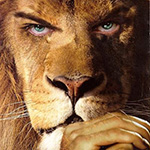

Lokimutt and Guardian Lion and Dusky and Katchshi
Plus Tier Supporters
- Skylos
- Snares
- Ausi Kat
- Chaphogriff
McRib Tier Supporters
- Lygris
- Roliga
Music
- Opening Theme: RetroSpecter – Cloud Fields (RetroSpecter Mix). USA: Unpublished, 2018. ©2011-2018 Fur What It’s Worth. Based on Fredrik Miller – Cloud Fields (Century Mix). USA: Bandcamp, 2011. ©2011 Fur What It’s Worth. (Buy a copy here – support your fellow furs!)
- Space News Music: Fredrik Miller – Orbit. USA: Bandcamp, 2013. Used with permission. (Buy a copy here – support your fellow furs!)
- Closing Theme: RetroSpecter – Cloud Fields (RetroSpecter Chill Mix). USA: Unpublished, 2018. ©2011-2018 Fur What It’s Worth. Based on Fredrik Miller – Cloud Fields (Chill Out Mix). USA: Bandcamp, 2011. ©2011 Fur What It’s Worth. (Buy a copy here – support your fellow furs!)
TigerTails Radio Season 11 Episode 51
Episode 22: "Tabletop Gaming" (2019-04-22)
[Live] Toad Gunge

An extended 4 hours and 20 minutes of FurCast as we’re off for another two weeks. Tol and Kota join us for a totally packed episode. From serious discussion to super fun shenanigans.
Link Roundup:- Dogbomb is Guest of Honor at Fur The More 2020
- From 2009: Dear Furries, Please Don’t Wear Real Fur. Love, PETA
- Flashgitz: Furry Apocalypse
- ZWEITESICH Fursuit Maker
- Fursuit entrepreneur learns rocky lessons about advertising
- Parody: SonicFox Challenged by Edgier, Brooding Rival ShadowWolf
- Jonathan Vair Duncan – What should pro artists do with their weird fetishes?
- This Is Me (Furry Music Video) 4K from “The Greatest Showman”
- We Infiltrated a Furry Convention (and had a great time)
- Does getting pegged by a woman mean you’re gay?
- Man Sues Parents for Destroying $29,000 Porn Collection
- Dubstep music an effective mosquito repellent, study suggests
- Police respond to burglary call, find out suspect is Roomba trapped in bathroom
- Smoking Psychedelic Toad Milk Could Alleviate Depression For Up To Four Weeks
- Kodi – “Fwd: Fursuit completion help (edited)”
- Purp – “Lesson from Purp. Please read on the show”
- Wolgon – “A shy furry needing help”
- Arufa M Orime – “I don’t know anymore.”
The Furry Writers’ Guild and Politics
There have been some accusations of the FWG being “too political” which we would like to address.
The FWG is not, and never has been, a political organization. As much as practical, we prohibit discussions of politics in FWG-branded spaces; as a group, we take no political stances, advocate no ideologies.
But the FWG is also an inclusive organization. Our members come from all over the world, from all walks of life, across many spectrums. The furry fandom is diverse, and so is our community of writers. We’re proud of this diversity. We consider it one of furry’s greatest assets, and one of the FWG’s. As our Code of Conduct states,
The FWG welcomes and supports all backgrounds and identities. This includes, but is not limited to, participants of any age, experience level, nationality, race, ethnicity, religion, ability/disability, gender identity and expression, sexual identity and expression, or level and type of participation in the furry fandom.
This means there are times we do have to take stands. The Code of Conduct expressly prohibits harassment, including the advocation of hateful ideologies. We oppose—and will take action against—any such behavior. We will not accommodate hate speech, for doing so is no defense of free speech. Instead it silences the speech of others. We cannot and will not turn a blind eye to bigotry, however artfully coded. If you are someone who would denigrate or demean another person based on ethnicity, nationality, religion, sexuality, gender, disability, or lack of means, the FWG is no place for you.
If this opposition to bigotry makes you feel unwelcome, then we trust you know where to find the door.
Tuca & Bertie

Today we have a trailer for a mew netflix animated series by the Bojack Horsemen people starting in May and this is one for the bird people. "They're just two ride-or-fly BFFs winging it together."
View Video
What Big Eyes You’ve Got…
Also at WonderCon we met an artist who works under the name Sprinklebat. Here’s another creator who (as you see on their web site) offers their works on a variety of pins, stickers, prints, and other products you can wear or display. In this case, those works tend to feature cute chibi characters with Really Big Eyes. Go ahead, look. You will be drawn in. Trust us.
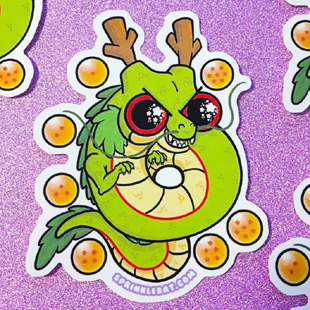
image c. 2019 by Sprinklebat
Cadbury Cucking Bunny Now With Henri!

It's Cadbury Creme Egg season and they held a contest to find the next bunny and Henri the English Bulldog won that contest. Now here is that commercial with more bulldog added. http://mentalfloss.com/article/577570/henri-adorable-bulldog-north-carolina-named-cadburys-newest-easter-bunny [1] [1] http://mentalfloss.com/article/577570/henri-adorable-bulldog-north-carolina-named-cadburys-newest-easter-bunny
View Video
All The Cutes
And another artist from WonderCon. Crowlines is a crafter from San Diego who specializes in terribly (that means wonderfully) chibi funny animals on pins, keychains, and other useful goodies. So head on over to their Etsy store and check out their latest wares. You’ll see what we mean.
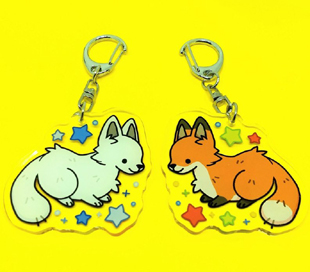
image c. 2019 by Crowlines
Bernie, Come back!

Here is a cute mixed medium short by Belgian animator Florence Piraux (Blind Leon [1]) and illustrator Marc Cheval [2]. Remember, keep your small dogs away from bees [1] http://www.blindleon.com/ [2] http://flaviensansr.ultra-book.com/accueil
View Video
Make ‘Em Laugh
Everyone has been talking about Disney+, the Mouse House’s new attempt to enter the streaming content market in a big way — looking to take on Netflix, Hulu, and all the rest. Well now Animation World Network has let us know about about a new animated series for Disney+ with a very familiar furry angle. “Billy Crystal and John Goodman will reprise their beloved roles as Mike and Sulley in Monsters At Work, a new animated series for families set to premiere on Disney+ in 2020. Produced by Disney Television Animation and inspired by the world of Disney and Pixar’s Academy Award-winning Monsters, Inc., the series picks up six months after the original movie’s story, with the Monsters, Inc. power plant now harvesting the laughter of children to fuel the city of Monstropolis, thanks to Mike and Sulley’s discovery that laughter generates ten times more energy than screams. Monsters At Work follows Tylor Tuskmon (voiced by Ben Feldman), an eager and talented young mechanic on the Monsters, Inc. Facilities Team (MIFT) who dreams of working his way up to the factory Laugh Floor to become a Jokester alongside his idols Mike and Sulley.” As the article points out, the voice cast includes a lot more familiar and talented names too.
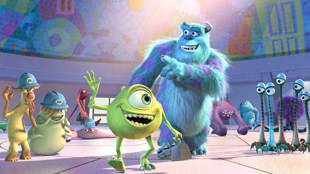
image c. 2019 Pixar

